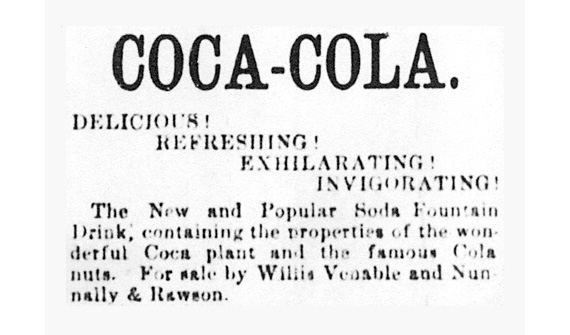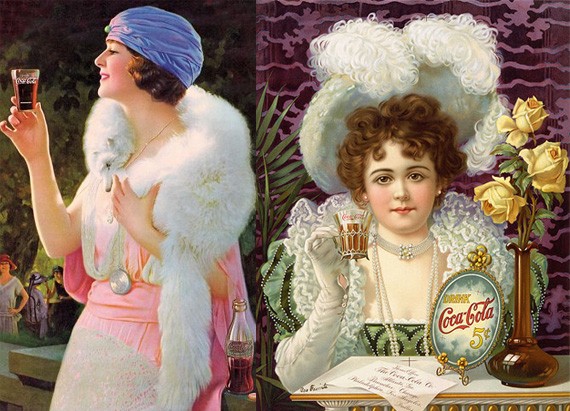Below is the first ever advertisement by Coca-Cola. It appeared in the Atlanta Journal in 1886. There is nothing special about it and it is nothing compared to the advertisements that appear in the following 100 years.
 | |
In the early 1900s Coca-Cola advertising relied on young women as their spokespersons. The first spokesperson of Coca-Cola is model Hilda Clark.

A Coca-Cola Christmas
Coca-Cola is responsible for creating the modern image of Santa Claus, i.e. an old, jolly and fat man in a red, white and black suit. Coca-Cola invented the red and white jolly Santa in the 1930s. It eventually replaced the image of Santa Claus as in a green or brown suit and even the image of him as an elf. The illustration of Coca-Cola's jolly and fat Santa Claus was done by Haddon Sundblom. Before, pretty young women endorsed Coca-Cola like Hilda Clarke above, and then Santa came along. Coca-Cola were the first beverage company to use Santa for winter promotion. Coca-Cola's famous red colour brushed off onto the the modern day image of Santa Claus. They did not originally set out to do this but as their image of Santa Claus appeared through their advertisements for decades, people began to consider that the real Santa Claus. And children who grew up at this time always saw this red, jolly man with a beard.This was the Santa they knew and it was passed down from generation to generation from then on. Below are some images and adverts for Coca-Cola. These ads were seasonal and would appear in the winter at Christmas. |
From: http://cdn2.1stwebdesigner.com/wp-content
/uploads/2011/05/red-and-
white-coca-cola-santa.jpg
|
| From :http://image0-rubylane.s3.amazonaws.com /shops/baublesbanglesandbeads/jrl007691. .jpg |
Here is a famous Coca-Cola christmas commercial That I am sure you are all familiar with. When we see this on TV we know for sure that "the holidays are coming".














